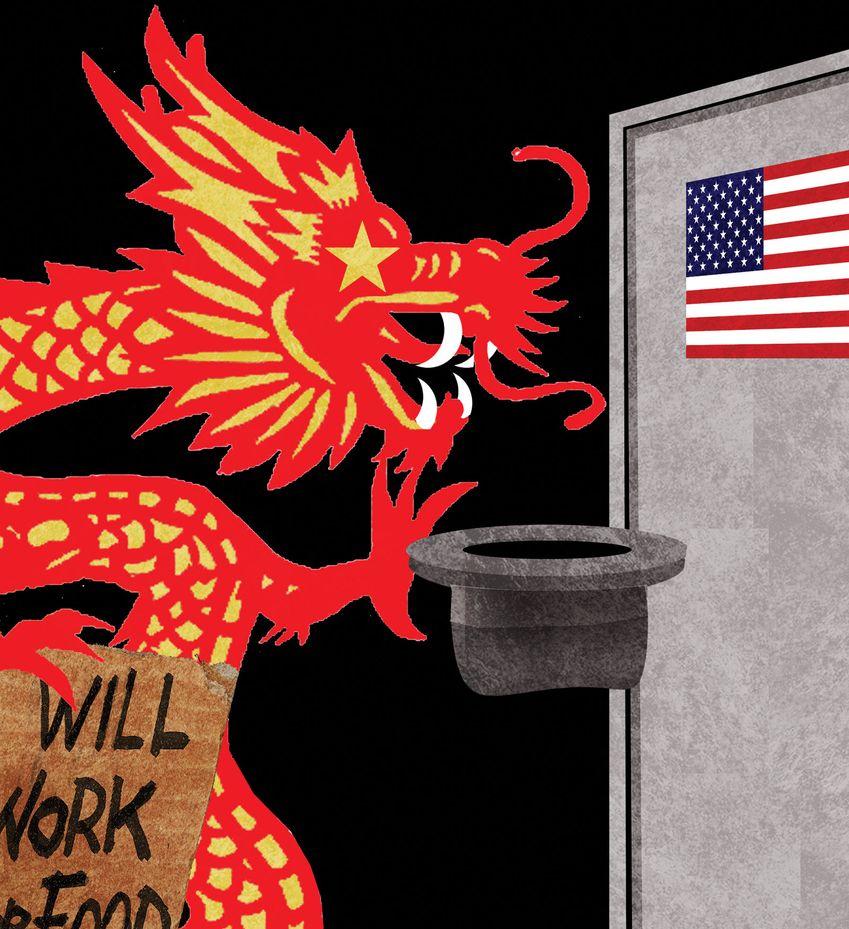
OPINION:
After months of flexing, showing no indication that China would back down in a potential trade war with the U.S., Xi Jinping blinked. U.S. and Chinese officials will meet in Switzerland this weekend for bilateral tariff talks.
While the U.S. media focuses on the pain the American consumer will feel in an extended fight with the Chinese because of President Trump’s 145% tariffs imposed on Chinese goods, little has been discussed regarding the economic hardships Beijing would experience and just how much leverage the U.S. can exert on the communist nation.
Mr. Trump understands the U.S. power in this relationship and has been merciless in applying it to squeeze the Chinese leader into better trade deals for the American public. Almost every foreign action Mr. Trump has undertaken — whether it be reclaiming the Panama Canal, talks of conquering Greenland or enacting secondary sanctions on Iran — has been aimed at lessening Chinese influence around the globe.
Overall, exports account for about 13% of China’s gross domestic product. The U.S. is estimated to represent about 3% of China’s GDP. Goldman Sachs calculates that 10 million to 20 million manufacturing jobs in China depend on U.S. purchases.
This week, Radio Free Asia reported unrest among Chinese factory workers, who are demanding back pay and the reinstatement of unfair dismissals after the closure of manufacturing plants because of Mr. Trump’s tariffs. Protests erupted in the streets, and construction workers threatened to throw themselves off buildings last month if their demands weren’t met. China quickly moved to censor these reports from the internet.
In April, China’s factory activity showed its steepest contraction in 16 months, while new export orders fell to their lowest levels since 2022 during the COVID-19 outbreak. Additionally, U.S. cargo bookings out of China have fallen 60%, according to San Francisco-based Flexport, which helps companies ship cargo around the world.
Last week, Capital Economics said the Chinese economy was likely weaker in the first quarter than its official growth figures suggested. It expected the economy to expand by 3.5% in 2025, well short of Beijing’s target of about 5%.
It has become so bad, The Wall Street Journal reported Sunday, that the Chinese government has “stopped publishing hundreds of data points, including land sales, foreign investment, and unemployment figures,” making it harder for outside economists “to know what’s going on in the country.”
As U.S. headlines this week focused on Mr. Trump’s comments that American girls may have fewer dolls under the Christmas tree this year because of the trade standoff with China, the Chinese were sending not-so-quiet signals that they were ready to come to the negotiating table.
In a defensive move, soon after Mr. Trump’s “Liberation Day” tariffs were announced and Treasury Secretary Scott Bessent warned other countries not to align with China, Mr. Xi traveled to his neighboring countries in Southeast Asia to shore up support.
China’s central bank said Wednesday that it would cut interest rates and inject more liquidity into its financial system to bolster its economy. Last week, it was widely reported that Beijing was considering making an offer to curb its role in the U.S. fentanyl crisis to help initiate talks. In late April, the communist nation lifted eight categories of U.S.-made chips from its 125% imposed tariffs to help buoy Chinese automakers reliant on U.S. exports to be competitive.
Then, on Wednesday, Beijing officially blinked. It agreed to meet with U.S. officials in Geneva on Saturday and Sunday to discuss easing tensions between the two countries. This, after Mr. Xi pledged to “fight to the end” and demanded that Mr. Trump remove all tariffs before negotiations began.
Mr. Trump didn’t budge. Instead, he endured the negative headlines and the pressure from Wall Street to backtrack, while always keeping the door open for Mr. Xi to make a deal.
“[The Chinese] want to meet, and they’re doing no business right now,” Mr. Trump said Tuesday at the White House during a visit by the Canadian prime minister.
In an interview on “Meet the Press” on Sunday, Mr. Trump issued a similar line.
“Five billion dollars a day we’re losing on trade. And we were very tough with China, as you know. We put 145% tariff on. Nobody’s ever heard of such a thing. And we’ve essentially cut off trade relationships by putting that much of a tariff on. And that’s OK. We’ve gone cold turkey,” he explained.
“That means that we’re not losing. You know, we lost a trillion dollars to China. A trillion dollars. That means we’re not losing a trillion dollars when we go cold turkey because we’re not doing business with them right now. And they want to make a deal. They want to make a deal very badly. We’ll see how that all turns out, but it’s got to be a fair deal,” Mr. Trump reiterated.
Now, Mr. Trump’s promised “Art of the Deal” is in full swing. His administration “never bet against America and never bet against Donald Trump.”
• Kelly Sadler is the commentary editor and a columnist for The Washington Times.












